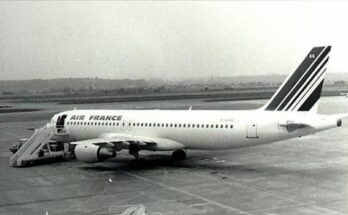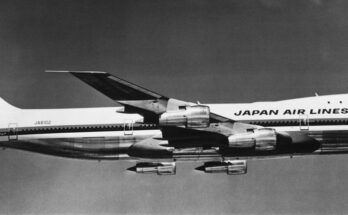
“Tragedy at Takeoff: The Deadliest Aviation Accident in U.S. History – American Airlines Flight 191”
On May 25, 1979, American Airlines Flight 191 departed from Chicago O’Hare International Airport, bound for Los Angeles. It never made it far. Just seconds after takeoff, the DC-10 aircraft rolled to its left, lost control, and slammed into an open field just outside the airport perimeter. In a matter of moments, all 271 people on board and two on the ground were killed, making it the deadliest aviation accident in U.S. history.
Flight 191 was operated by a McDonnell Douglas DC-10-10 aircraft, registration N110AA. On that fateful day, the flight carried 258 passengers and 13 crew members. It was a clear Friday afternoon heading into the Memorial Day weekend, and the flight was fully booked.
At 3:02 PM local time, Flight 191 began its takeoff roll from Runway 32R. Everything appeared normal during the initial stages. But as the aircraft lifted off the runway, tragedy struck. About six seconds after liftoff, the left engine — engine number one — separated from the wing and flipped over the top of the wing, damaging the leading edge and critical hydraulic and electrical systems.
With the engine gone and hydraulic lines severed, the pilots lost control of key systems. The aircraft began banking sharply to the left. Within 31 seconds of becoming airborne, Flight 191 inverted and crashed into a nearby trailer park and an open field. A massive fireball erupted, visible for miles. First responders rushed to the scene but found no survivors.

The investigation, led by the National Transportation Safety Board (NTSB), revealed that the accident was not simply a case of engine failure. Instead, it was traced back to a flawed maintenance procedure.
American Airlines had adopted a shortcut during engine and pylon maintenance, removing the engine and pylon as a single unit instead of separately, as recommended by the manufacturer. While this method saved time, it introduced risks. During the maintenance conducted eight weeks before the crash, a forklift used to remove the engine caused damage to the pylon’s mounting flange. The resulting crack went undetected.
Eventually, the crack worsened due to metal fatigue. When Flight 191 was accelerating for takeoff, the pylon attachment failed, and the engine broke away. The pilots, unaware of the full extent of the damage, followed standard emergency procedures, including reducing speed and retracting flaps — steps that proved fatal given the aircraft’s compromised aerodynamics and instrumentation.
One of the most shocking aspects of the accident was that the pilots had no warning of the impending catastrophe. The loss of the left engine also severed electrical lines that powered key cockpit indicators, including systems showing engine status and wing configuration. Essentially, the crew was flying blind in the critical seconds after takeoff.

In the aftermath, the FAA grounded all U.S. DC-10 aircraft, and other countries followed. The entire fleet was only allowed to resume service after a thorough inspection of the pylon mounts and changes to maintenance procedures. The accident also spurred changes in training, oversight, and how airlines perform critical maintenance work.
The tragedy left an indelible mark on aviation history. Memorial services were held across the country, and the crash site near O’Hare became a place of mourning. Many of the victims’ families formed advocacy groups to push for safer air travel and stronger airline accountability.
Though McDonnell Douglas and American Airlines faced scrutiny, no criminal charges were filed. However, the accident forever changed the public’s trust in the DC-10 — a plane already under suspicion following a cargo door failure on Turkish Airlines Flight 981 in 1974.
Today, the legacy of Flight 191 lives on as a sobering reminder of how small oversights in aviation maintenance can lead to catastrophic consequences. It also underscores the importance of strict adherence to manufacturer guidelines, proper training, and regulatory oversight.
A memorial now stands in Lake Park, Des Plaines, Illinois, listing the names of all 273 victims. It serves as a powerful tribute to those who lost their lives and as a reminder to the industry of the responsibilities that come with the skies.


